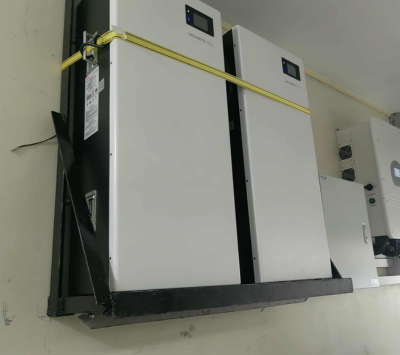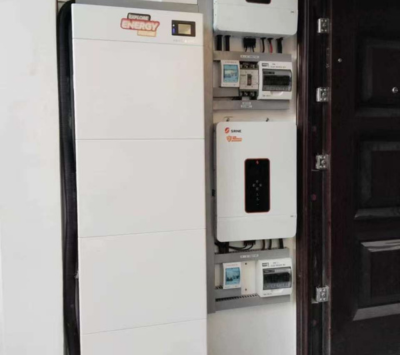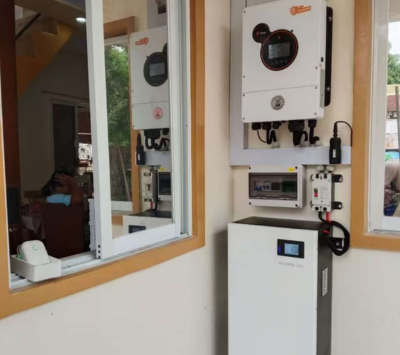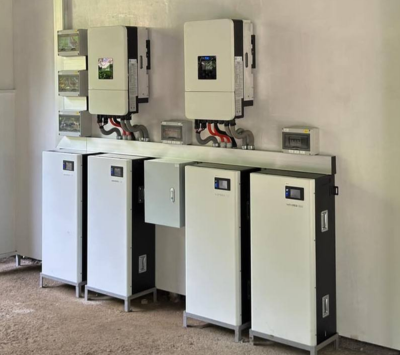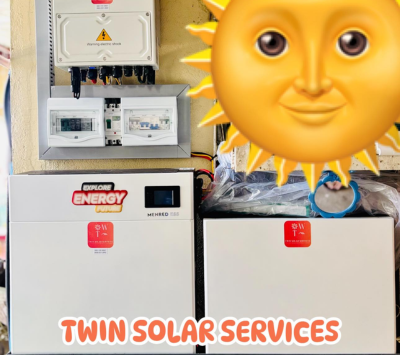Exploring the Economically Efficient Combination of the Deye 16kW Inverter and MENRED ESS LiFePO4 Battery, our article particularly focuses on the market cost benefits of its 51.2V low-voltage design. This advanced photovoltaic storage system is not only highly efficient and suitable for large households, but its design strategy also ensures that homeowners can easily purchase batteries at the most competitive market prices. We explore how this approach not only enhances the accessibility and affordability of home energy systems but also contributes to a more sustainable and self-reliant energy future. From the convenience of installation to operational cost savings, our comprehensive discussion sheds light on how this system plays a pivotal role in meeting the growing energy needs of modern households, all while ensuring a smarter, greener energy management strategy.
Project Address:
Metro Manila Philippines
Configuration List:
- tiger Neo 78HC 610Wp *27pcs, Total 16.5kWp
- Deye 16kW hybrid inverter single phase low voltage *1, manual dowload
- MENRED ESS 12.28kWh LiFePO4 Batteries x 2, Total 24.56kWh 27

focuses on the application of the Deye 16kW Hybrid Inverter in residential photovoltaic storage systems. This inverter supports 230Vac single-phase AC output and is compatible with 51.2V low voltage LiFePO4 batteries. A key advantage of the Deye 16kW inverter is its compatibility with widely available and competitively priced 51.2V low voltage batteries in the market. Its 16KW AC output capacity can meet the demands of most households with high-power appliances, making it an ideal high-power residential photovoltaic storage solution. We delve into how this system offers efficient energy management while bringing practical and economic benefits to modern households through easy-to-source and cost-effective battery options.
How many panels for 16kw inverter?
The Deye 16kW Hybrid Inverter features three photovoltaic (PV) inputs, with multiple Maximum Power Point Trackers (MPP Trackers) and the capability for multiple strings per tracker. It offers a maximum PV input power of 20.8kW, a maximum input voltage of 500Vdc, and an MPPT voltage range of 150Vdc to 425Vdc, with each tracker handling a max input short-circuit current of 44 Amps. In this case, each input is connected to 9 solar panels in series, achieving an open-circuit voltage of 497.25V. The total PV power through the three inputs reaches 16.5kW, ideally suited for the system, thereby providing efficient energy management and superior performance for residential photovoltaic storage systems.
What is the battery capacity of Deye?
The Deye 16kW Hybrid Inverter is compatible with 51.2V lithium batteries, supporting a maximum charging/discharging current of 290Amp. Considering that mainstream LiFePO4 batteries in the market typically have a 0.5C charge/discharge rate, a 32kWh battery capacity is required to ensure stable output for the 16kW inverter. MENRED ESS’s LFP.6144.G2 model offers 51.2Vdc and 240Amp discharging current. With two units in parallel, it can provide up to 480Amp current output, comfortably meeting the demands of a 24.5kW inverter. Featuring 1C high-cycle cells and a 300Amp BMS, the MENRED ESS LFP.6144.G2 can be paralleled in up to four groups, ensuring efficient and stable energy support for the Deye 16kW Hybrid Inverter while maximizing cost efficiency.
Installation of the MENRED ESS LFP.6144.G2 battery is extremely straightforward. Simply stack and secure the two LFP.6144.G2 battery modules against a wall, connect the positive and negative terminals, and attach the communication lines. Once the parallel control box is installed on top and connected to the BMS master control, the setup is complete. At this point, connecting the batteries to the Deye inverter will provide a reliable power supply. Notably, as the officially recommended LiFePO4 battery for Deye inverters, the MENRED ESS battery is fully compatible with the inverter’s BMS, ensuring efficient system operation. The BMS master control in the parallel control box also passively balances the battery modules, maintaining high consistency in their performance, which is crucial for the stability and efficiency of the entire photovoltaic storage system.


Do you need a circuit breaker for an inverter?
Circuit breakers are crucial for photovoltaic storage systems, especially in the Philippines, known for its frequent thunderstorms. The country’s tropical maritime climate brings abundant sunshine year-round, divided into dry and wet seasons, with the high-temperature and rainy season demanding comprehensive protection for PV systems. To ensure stable operation, we have equipped each photovoltaic (PV) string with DC circuit breakers, lightning surge protectors, and fuses. These components protect the system during lightning strikes. Additionally, DC circuit breakers are installed between the battery and the inverter for ease of maintenance and extra protection. AC circuit breakers at the inverter’s output end add a layer of protection between the photovoltaic storage system and household appliances, safeguarding against any unforeseen damage to the system or appliances.
In the quest for efficient energy solutions, we encountered a typical yet challenging scenario: catering to the specific needs of high-end users. These users often rely on single-phase electrical supply but face substantial power demands from household appliances, coupled with a desire for cost-effective battery systems. In this context, our proposed photovoltaic storage system solution demonstrates unique advantages and adaptability.
Key to this solution is the integration of the Deye 16kW Hybrid Inverter. Compatible with 51.2V low voltage LiFePO4 batteries and supporting a maximum charging/discharging current of 290Amp, this inverter easily handles high load demands. Its capacity to deliver up to 16kW of AC output ensures stable energy supply even under heavy loads, meeting the operational requirements of large household appliances.
Considering battery cost-effectiveness and compatibility, we opted for the MENRED ESS LFP.6144.G2 battery. Characterized by high-cycle cells and a 300Amp BMS, it provides consistent and stable energy output. Crucially, when two battery modules are paralleled, their current output reaches up to 480Amp, not only meeting the inverter’s requirements but significantly enhancing the overall system performance and reliability.
Safety is a paramount consideration in every aspect of the system. From DC circuit breakers, lightning surge protectors, to AC circuit breakers, these safety measures ensure stable and secure operation even under extreme weather conditions.
Finally, considering the unique climatic conditions of the Philippines, our system design takes environmental factors into account. The tropical maritime climate of the Philippines means frequent thunderstorms, posing higher demands on the stability of photovoltaic storage systems. Our meticulously designed protection system ensures continuous and stable operation even during frequent thunderstorm seasons.
In summary, this photovoltaic storage system not only meets the high load demands of premium users but also offers cost-effective battery options, all the while ensuring safe and stable operation. The implementation of this system solution undoubtedly provides an ideal choice for households seeking efficient energy solutions, especially suitable for those with single-phase power limitations and high energy demands.

